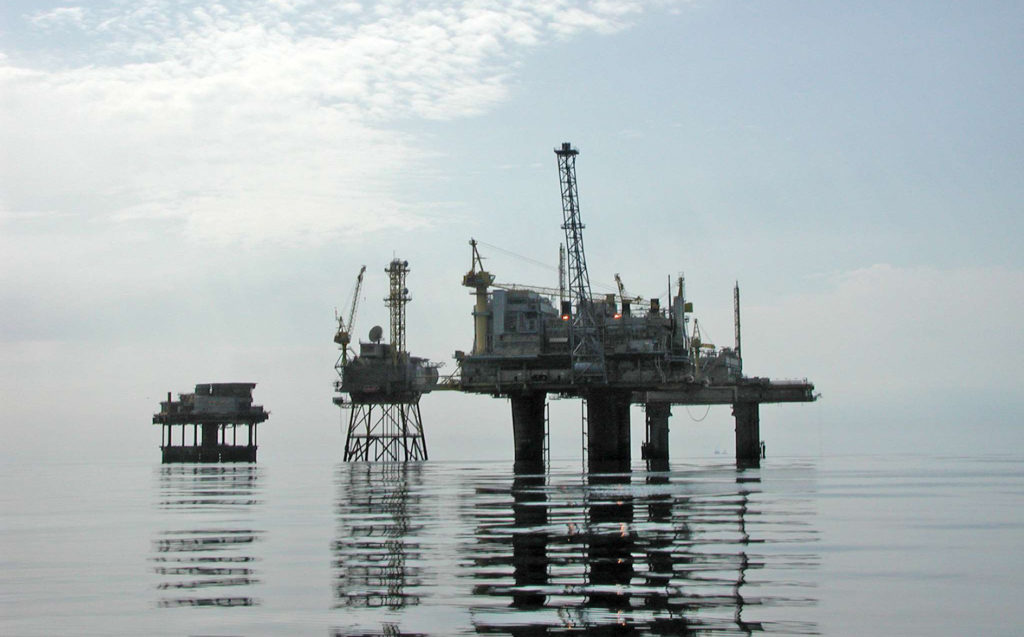The Impact of Frigg

A Brief History of Gas Supply in the UK
Demand for coal gas therefore grew dramatically during the 19th century, and was sustained by copious quantities of coal from the UK’s many coalfields. The gas itself was produced in increasingly large gas works (see Figure 1, Dumbarton Gas Works, Scotland), first in the big cities, and then even in small towns. As the scale of these operations increased, so did the network of pipes and mains delivering the gas from the gas works to the customers. Inevitably, the gas brought with it many hazards, increasing the risk of fire and explosion wherever it was used. It was also poisonous, a significant proportion of its combustible content being highly-toxic carbon monoxide.
The gas would not have been deliverable without reliable pipes. These were manufactured from cast iron, one of the most important production centres of which was central Scotland, around Glasgow. Indeed, Glaswegian iron founders pioneered pipe-casting technology, becoming a global manufacturing centre for pipes used both in gas and high-pressure water supply by the mid-19thcentury. However, the varying standards and lack of regulation led to increasing problems, and in the last decades of the 19th century, many cities and towns took gas works and supply systems into municipal control.
By the early 20th century, gas had acquired a major competitor in the form of electricity, but demand continued to increase because of the rapidly expanding industrial and domestic uses to which it was put. In 1949, the newly elected socialist government chose to nationalise and unify gas supply, combining over 1,000 private and municipal gas works and associated networks under the control of a national body called “The Gas Board”. In subsequent years, links between local networks were made, and a “national grid” of gas supply was established.

Demand for gas continued to grow, and ways of enhancing supply were investigated. An experimental coal gasification plant based on the Lurghi Process was established at Cardenden in Fife, Scotland, and the first liquefied natural gas was imported to Britain from Louisiana in 1959. Meanwhile, a sequence of choking smogs engulfed British cities, leading to the introduction of clean-air legislation which severely curtailed the use of coal in open fires, further fuelling demand for gas and promoting the advance of central heating systems. Whilst fuel-oil offered a viable alternative until the mid-1970s, gas proved to be the most popular option, and was regarded as being a clean fuel.
From the 1960s, the discovery of North Sea gas, and the ease with which liquefied natural gas was being imported from Algeria, signalled a change, and the decision was made in 1966 to convert the entire British gas system to natural gas. This process was completed in 1977, by which time gas engineers had converted over 34 million gas appliances.
The Impact of Frigg

It was the discovery of Frigg and other large gas fields in the North Sea that led to the decision to convert from coal to natural gas in the UK. By the time Frigg came on line in 1977, therefore, the demise of the town and city gas works was almost complete. Natural gas first reached the major towns and cities that were connected to the gas grid, whilst more isolated towns with small gas works, such as Biggar and Millport in Scotland, tended to retain their coal-gas production for longer.
Gas works were usually not highly-valued elements within the urban landscape. As well as being a source of atmospheric pollution, they tended also to be a source of serious land contamination. In most cases, the buildings were functional and not particularly attractive, although the gas holders were sometimes ornate, occasionally becoming much valued landmarks. With their closure, there was therefore little resistance to the demolition and clearance of their buildings, although significant elements of the infrastructure, including storage and distribution facilities and plant, were adapted and retained to be used for the replacement natural-gas supply.
Typical examples of gas works include Aberdeen (see Figure 2), most of the buildings of which have disappeared. One of the more architecturally important works was at Granton in Edinburgh, which was built to the design of W R Herring and commenced production in 1899 (see Figure 3). Today, almost all of the buildings have been demolished, and although the gas holder has been listed, it too may have to be demolished in due course because of high maintenance costs.
With the exception of the gas holders, very little of most of the UK’s coal gas works now survive, considering their prevalence and scale. Three small town gas works have, however, been preserved as museums. These are Biggar (in Scotland, see Figure 4), Fakenham (in England), and Carrickfergus (in Northern Ireland). As a consequence, a once-significant element of every city’s landscape has disappeared. Many sites have remained derelict for many years because of contamination fears, but some of have been successfully re-developed, leaving little trace of their previous use.

The other major impact of natural gas from Frigg and other fields was an acceleration in the decline of the British coal industry. In Scotland in 1947, there were almost 300 deep coal mines in operation, and even ten years later, the industry continued to employ over 100,000 people. A significant proportion of this output from the mines was consumed by gas works, and the bi-products such as coke and chemicals were also important to many industries. All this activity has now disappeared, their demise being further encouraged in the 1990s by the UK Conservative government’s decision to approve gas-powered electricity power stations in the so-called “Dash for Gas”. The last of Scotland’s deep coal mines, Longannet, closed after a flood in 2003. With the exception of Lady Victoria Colliery near Edinburgh (see Figure 5), which produced fine gas coal and has been preserved as a mining museum, most of the mines’ surface buildings have been cleared away, and in large parts of central Scotland, there is no evidence of coal mining ever having occurred.
